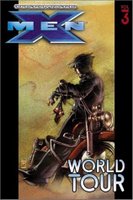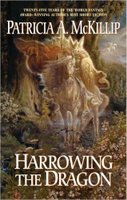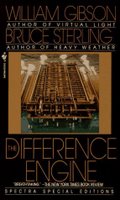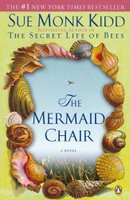Another magical book from McKillip-- this time, a collection of her short stories. I was pretty excited to see a new book from McKillip when I first discovered this book; I have to admit, I was a little disappointed when I finally got a copy from the library and found out it was a collection of short stories. I think sometimes I don't enjoy short stories as well because there is no continuing engagement with the book: each section you have to start over again with new characters and places, and often in a book like this I enjoy some stories more than others, and usually find a few to dislike. That was not the case here-- they are self-contained, but still delightful.
There are many wonderful stories here, so I'll try to limit myself to a few of my favorites.
In the title story, "The Harrowing of the Dragon of Hoarsbreath," two young people meet up with the ice dragon who keeps the cold of a unique arctic-like mining community-- and in the process of "harrowing" the dragon, or driving it away from the people, end up changing their home forever.
"A Matter of Music" is a wonderful story that, like McKillip's Song for the Basilisk, draws on the power of music-- in this case, a young female bard's music has the strength to reunite a prince with his estranged wife and to begin the difficult task of restoring a relationship between two warring peoples.
In "The Fellowship of the Dragon" several women go on a quest at the behest of their Queen & friend-- they cross over into the kind of place "where anything can happen," and one by one they are separated. When the last one (the narrator) finally comes to the Queen's bard she was sent to rescue, she discovers she gets along with the dragon better, so the two of them go off to try to find and recover her friends.
"Lady of the Skulls" is strange and almost fable-like; a kind of morality tale about relationships and true value. Several men come to a tower in the middle of the desert filled with untold wealth and tended by one woman. If they can correctly choose the one thing that is most valuable in the tower, then all of it will be theirs; but if not, they must die (and many have tried and failed, hence the skulls). Only one young man among the group has the keen insight to discern the true value the tower holds.
"The Lion and the Lark" is a wonderful fairy tale that starts out like Beauty & the Beast, but goes much further. "Ash, Wood, Fire" tells of young girl who works as a fire tender in a medieval kitchen. In "Transmutations," a young woman works for a philosopher in order to transform her poetry into something golden-- but when she sees the perfection and stillness to which transmutation aspires, she decides she prefers the noisy, imperfect, everyday world. "Star-Crossed" is a wonderful story about "what came after" Shakespeare's Romeo & Juliet (the story is so familiar, and we're so used to watching it all unfold that we forget-- all those who knew the true story died), as a city watchman struggles to uncover the reasons for the many bloody bodies in Juliet's tomb. Similarly, "Toad" takes on the fairy tale of the Princess & the toad, told from the toad's perspective-- but the story hints at something else: how fairy tales and stories can change your life, fascinate you and make you grow up suddenly when you weren't expecting it.
There are many more-- a few in more contemporary settings, most in the fantastic worlds like most of McKillip's books. Overall, these stories are well worth anyone's time.
| Title: | Harrowing the Dragon |
|---|
| Author: | Patricia McKillip |
|---|
| Date published: | 2005 |
|---|
| Genre: | Fantasy, Short Stories |
|---|
| Number of pages: | 310 |
|---|









